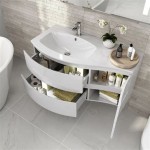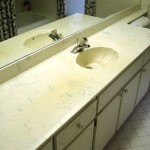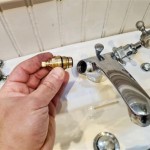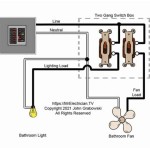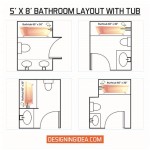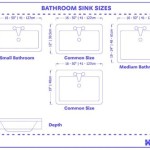How To Change a Bathroom Sink Plug: A Comprehensive Guide
The bathroom sink plug, often referred to as a stopper, plays a crucial role in retaining water for various tasks, from washing hands to shaving. Over time, these plugs can malfunction due to wear and tear, corrosion, or damage. Replacing a faulty bathroom sink plug is a relatively straightforward plumbing task that can be accomplished by most homeowners with basic tools and a clear understanding of the process. This article provides a comprehensive guide on how to change a bathroom sink plug, covering different types of plugs, necessary tools, and step-by-step instructions.
Identifying the Type of Bathroom Sink Plug
Before attempting to replace a bathroom sink plug, identifying the type of plug installed is essential. Different types of plugs require different removal and installation techniques. Common types of bathroom sink plugs include:
Pop-Up Stoppers: This type of stopper is operated by a lift rod or a knob located behind the faucet. When the lift rod is raised, the stopper pops up, allowing water to drain. When the rod is lowered, the stopper seals the drain.
Lift-and-Turn Stoppers: These stoppers have a small knob on top that is twisted to open or close the drain. The knob typically has a small screw that holds it in place.
Push-Button Stoppers (Click-Clack): These stoppers operate with a simple push. Pushing the stopper once seals the drain, and pushing it again releases the water.
Flip-Lever Stoppers: Similar to pop-up stoppers, flip-lever stoppers are operated by a lever located near the faucet. Flipping the lever opens or closes the drain.
Rubber Stoppers: These are simple, inexpensive stoppers made of rubber. They are manually placed over the drain opening to seal it and removed to allow water to drain.
Determining the type of stopper in the bathroom sink is the first step towards a successful replacement. Each type requires a slightly different approach to both removal and installation.
Gathering the Necessary Tools and Materials
Having the right tools and materials on hand before starting the replacement process will ensure a smooth and efficient operation. The following tools and materials are typically required:
New Bathroom Sink Plug: Purchase a replacement plug that matches the type and size of the existing plug. It is advisable to have the old plug as reference when purchasing the new one, or ensuring the new plug is compatible with the sink's drain assembly.
Adjustable Wrench: An adjustable wrench is needed to loosen and tighten the nuts that secure the drain assembly.
Pliers: Pliers can be helpful for gripping and manipulating small parts of the drain assembly.
Basin Wrench (Optional): A basin wrench, also known as a sink wrench, is designed specifically for working in tight spaces under the sink. It can be particularly useful for loosening and tightening hard-to-reach nuts.
Screwdriver: A screwdriver (usually a Phillips head) may be needed to remove screws that hold the lift rod or other components of the drain assembly in place.
Plumber's Putty or Silicone Sealant: Plumber's putty or silicone sealant is used to create a watertight seal around the drain flange.
Clean Rags or Paper Towels: Rags or paper towels are needed to clean up any spills and to wipe down the drain assembly.
Bucket: A bucket is essential for catching any water that may be present in the drain pipes.
Gloves: Wearing gloves protects hands from dirt and potential irritants.
Having all these tools and materials readily available will streamline the replacement process and prevent unnecessary delays.
Step-by-Step Instructions for Replacing a Pop-Up Stopper
Replacing a pop-up stopper involves several steps to ensure proper installation and a watertight seal. The following instructions detail the process:
Step 1: Prepare the Work Area: Place a bucket under the sink to catch any water that may be present in the drain pipes. Clear the area under the sink of any items that might obstruct access to the drain assembly.
Step 2: Disconnect the Lift Rod: Locate the lift rod that extends from behind the faucet down to the drain assembly. Loosen the screw that connects the lift rod to the clevis strap. The clevis strap is a perforated metal strip connected to the pivot rod, which operates the stopper. Once the screw is loosened, detach the lift rod from the clevis strap.
Step 3: Remove the Pivot Rod: The pivot rod is a horizontal rod that extends from the drain assembly into the tailpiece. Loosen the nut that secures the pivot rod to the drain assembly. Once the nut is loosened, pull the pivot rod out of the drain assembly. Be prepared for some water to spill out when the pivot rod is removed.
Step 4: Remove the Old Stopper: The old stopper can now be removed from the top of the drain. If the stopper is stuck, gently wiggle it or use a pair of pliers to loosen it.
Step 5: Loosen the Drain Flange Nut: From underneath the sink, locate the large nut that secures the drain flange (the part of the drain that sits inside the sink) to the sink. This nut is typically made of metal or plastic. Using an adjustable wrench or basin wrench, loosen this nut.
Step 6: Remove the Old Drain Flange: Once the nut is loosened, carefully push the drain flange up from underneath the sink. At the same time, from above the sink, gently lift the drain flange out of the sink. Be prepared for some water and debris to spill out. Clean the area around the drain opening of any old plumber's putty or sealant.
Step 7: Install the New Drain Flange: Apply a bead of plumber's putty or silicone sealant around the underside of the new drain flange. Insert the new drain flange into the drain opening from above the sink. From underneath the sink, slide the rubber washer and then the metal washer onto the drain flange. Tighten the drain flange nut by hand, then use an adjustable wrench or basin wrench to tighten it further. Do not overtighten, as this could crack the sink or the drain flange.
Step 8: Install the New Stopper: Insert the new stopper into the drain from above the sink. Ensure it is properly seated in the drain opening.
Step 9: Reinstall the Pivot Rod: Insert the pivot rod into the drain assembly from the side. Align the hole in the pivot rod with the hole in the stopper. Secure the pivot rod by tightening the nut.
Step 10: Reconnect the Lift Rod: Reconnect the lift rod to the clevis strap. Adjust the position of the clevis strap until the stopper operates smoothly. Tighten the screw that secures the lift rod to the clevis strap.
Step 11: Test the Stopper: Fill the sink with water and check for leaks around the drain flange and the pivot rod. Operate the lift rod to open and close the stopper and ensure it is functioning properly. If there are any leaks, tighten the nuts or apply more plumber's putty or silicone sealant.
Dealing with Other Types of Stoppers
While the above instructions focus on pop-up stoppers, the principles of replacing other types of stoppers remain similar. Here’s a brief overview of how to approach different stopper types:
Lift-and-Turn Stoppers: These stoppers often require a screwdriver to remove the knob on top. Once the knob is removed, the stopper can usually be lifted out. The replacement process involves inserting the new stopper and securing the knob with a screw.
Push-Button Stoppers (Click-Clack): These stoppers often come as a complete unit. Removing the old one might require unscrewing it from the drain body. The new stopper is then screwed in, ensuring a tight seal.
Flip-Lever Stoppers: These are similar to pop-up stoppers but have a different lever mechanism. The removal and installation process will involve disconnecting the lever and pivot rod in a similar fashion as described above.
Rubber Stoppers: These are the simplest to replace. Simply remove the old rubber stopper and replace it with a new one.
Regardless of the type of stopper, always ensure to clean the drain area thoroughly before installing the new stopper and to check for leaks after installation.
Troubleshooting Common Problems
Even with careful attention to detail, certain problems may arise during the process of replacing a bathroom sink plug. Addressing these issues effectively can prevent further complications. Common problems and their corresponding solutions include:
Leaks: Leaks are a common issue after replacing a drain plug. This often occurs when the connections are not tightened sufficiently or when the plumber's putty or silicone sealant is not applied properly. To address leaks, carefully tighten all the nuts and connections in the drain assembly. If the leak persists, remove the drain flange and apply fresh plumber's putty or silicone sealant before reinstalling it.
Stopper Not Sealing Properly: If the stopper does not seal properly, water will slowly drain from the sink. This can be caused by a misaligned stopper or debris trapped in the drain opening. To fix this, ensure the stopper is properly seated in the drain opening. Clean the drain opening of any debris and adjust the position of the clevis strap or pivot rod as needed.
Difficulty Loosening Nuts: Over time, the nuts in the drain assembly can become corroded and difficult to loosen. Applying penetrating oil to the nuts and allowing it to soak for several minutes can help to loosen them. If the nuts are severely corroded, using a basin wrench or adjustable wrench with a longer handle can provide more leverage.
Stripped Screws: Stripped screws can make it difficult to remove or tighten components of the drain assembly. If a screw is stripped, try using a rubber band or steel wool between the screwdriver and the screw head to provide more grip. If this does not work, you may need to use a screw extractor to remove the stripped screw.
Incompatible Replacement Parts: It is crucial to ensure that the replacement parts are compatible with the existing drain assembly. Using incompatible parts can lead to leaks or other problems. Before purchasing replacement parts, carefully examine the old parts and compare them to the new ones. If you are unsure whether a part is compatible, consult with a plumbing professional.

How To Replace A Rusty Sink Drain Howtolou Com

How To Remove A Bathroom Sink Stopper Take Out Pop Up Drain From

How To Replace A Sink Stopper Quick And Simple Home Repair

How To Fix A Bathroom Sink Drain Stopper 4 Easy Solutions

Quick Tip 26 Pop Up Stopper Sticks Misterfix It Com

How To Fix Or Maintain Your Sink S Pop Up Mechanism
Install A Drain Stopper So The Is Removable
How To Get A Bathroom Sink Plug Removed When It Won T Un Quora

How To Fix Pop Up Drain Waste Plug

How To Remove A Sink Stopper The Home Depot
Related Posts
